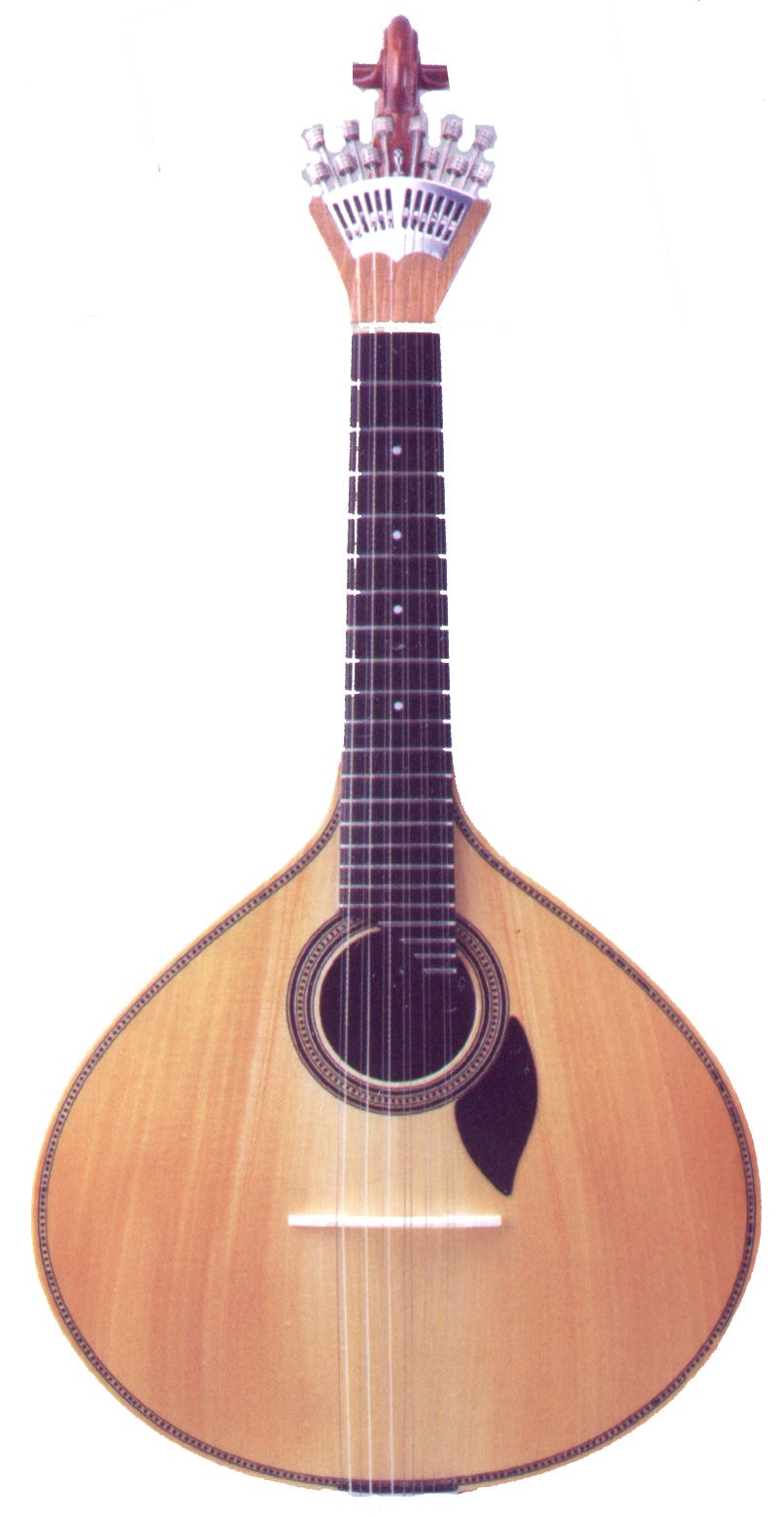Our Grand Night of Fado — Traditional Portuguese Music
I was running errands in Albufeira last week when I saw the banner above for a Grande Noite de Fado. Wayne and I are preparing to leave Portugal in mid-October, and we had not yet seen a Fado performance, so I decided we had to go. I sent an email to the address on the banner, and we had our reservation for dinner.
In case you've never heard of it, Fado is traditional Portuguese folk music that originated in Lisbon in the early 1800's, but has roots going back much further. The sentimental songs about resignation, love, death, the sea and life were sung by fishermen, sailors, and dock workers. Today, the singers are accompanied by stringed instruments, frequently just a traditional guitar and a Portuguese guitarra.
This is a twelve-stringed instrument that looks more like a lute or mandolin and still uses these very weird-looking tuners called Preston tuners (named after some Englishman) that date back to the 1800's. The Portuguese guitar is plucked in intricate riffs while the traditional guitar plays more of the rhythmic base.
I know this now having heard the music, but I knew almost nothing about it on Saturday evening when Wayne and I locked the dogs in the yard and took off at 19:15 on our big night out. I was worried we might not find the place because even Google Maps didn't know where it was.
Okay, leaving at that hour was our first mistake. See how the poster says 19:30 (7:30 p.m.)? Well, that's Portuguese time. Turns out, the big aluminum building that looked like an industrial warehouse was easy to spot in the tiny village of Fontainhas. We parked in the dirt lot and wandered inside, and the place looked almost empty. Clearly we were early. We bought our tickets for 12 euros each, and we were assigned seats at table #3. Inside the aluminum building was a cavernous hall, with banners hung around the walls for the local optometrist, barber shop, and auto body shop among others. There were probably fifteen tables with paper table cloths surrounded by eight white plastic chairs. Each place setting was topped with a wine glass, while Wayne headed over to the counter to collect our pitcher of vinho tinto (red wine) from the hair-netted ladies at the cafeteria-like kitchen, I introduced myself to the other three people at our table. Turns out the organizers had put the foreigners together, as they were a husband, wife, and the wife's mother all from Holland.
They were delightful folks to chat with—they had owned a 1911 riveted steel canal boat for twenty years. We seem to meet boaters everywhere we go. Slowly, the locals began to fill the other tables. It was 8:30 when folks began to line up for food. Dinner was a pork and rice dish with salad and rice pudding for dessert. Oddly, they served bowls of potato and leek soup with chorizo (see the photo) after the pudding. It was 9:30 by the time Wayne fetched our little espresso coffees and the musicians began to wander to the front of the hall.
Of course, once the announcer picked up the microphone, everything was in Portuguese. About a dozen men stood at the back of the room watching and cheering the muted TV in the cafeteria that was showing the soccer game. People at the tables around us sipped the coffee and continued to chat. And with that concrete floor and the aluminum siding, let's just say the acoustics weren't great. But because I speak a bit of Spanish and a bit more French, I could make out some of what the guy was saying. The evening was a fund raiser for Aldeia da Solidariedade, a non-profit working to build a nursing home and day care center in the village, and they put on events like that evening to raise money.
It might have been more "cool" to watch our first Fado performance in a dark, crowded country restaurant as the owner and his daughter stepped up to sing, but we have been living in Albufeira and this event suited the Portugal we had come to know. For the next two hours, with a half hour break between, we listened to four men and four women singers. The music was similar, but singers were so different. Maria da Saudade, who is the woman featured in the video below, was the first one up and the last as well. She was clearly the star of the night, although there was a blond with a perpetual snarl on her face who was also quite the diva. Then there was the tall slender man in a checked suit and handlebar mustache with a gravelly tenor voice and serious demeanor. I really enjoyed the portly chap who had perhaps consumed too much Porto that evening who flapped his elbows as he sang and looked like he was trying to do the chicken dance. Wayne and I agreed that our favorite singer was man who looked like a banker or insurance agent, but he could belt it out like an opera singer.
Check out this video for a good montage of different types of songs sung by both men and women.
It was fun, and when we pulled up to the villa gate at half past midnight, the puppies were there waiting wondering what had kept us out so long. As usual, they greeted us as though they thought we'd never return until I tried to sing them a few off-key notes of my version of Fado.
Fido didn't approve.
Fair winds!
Christine







